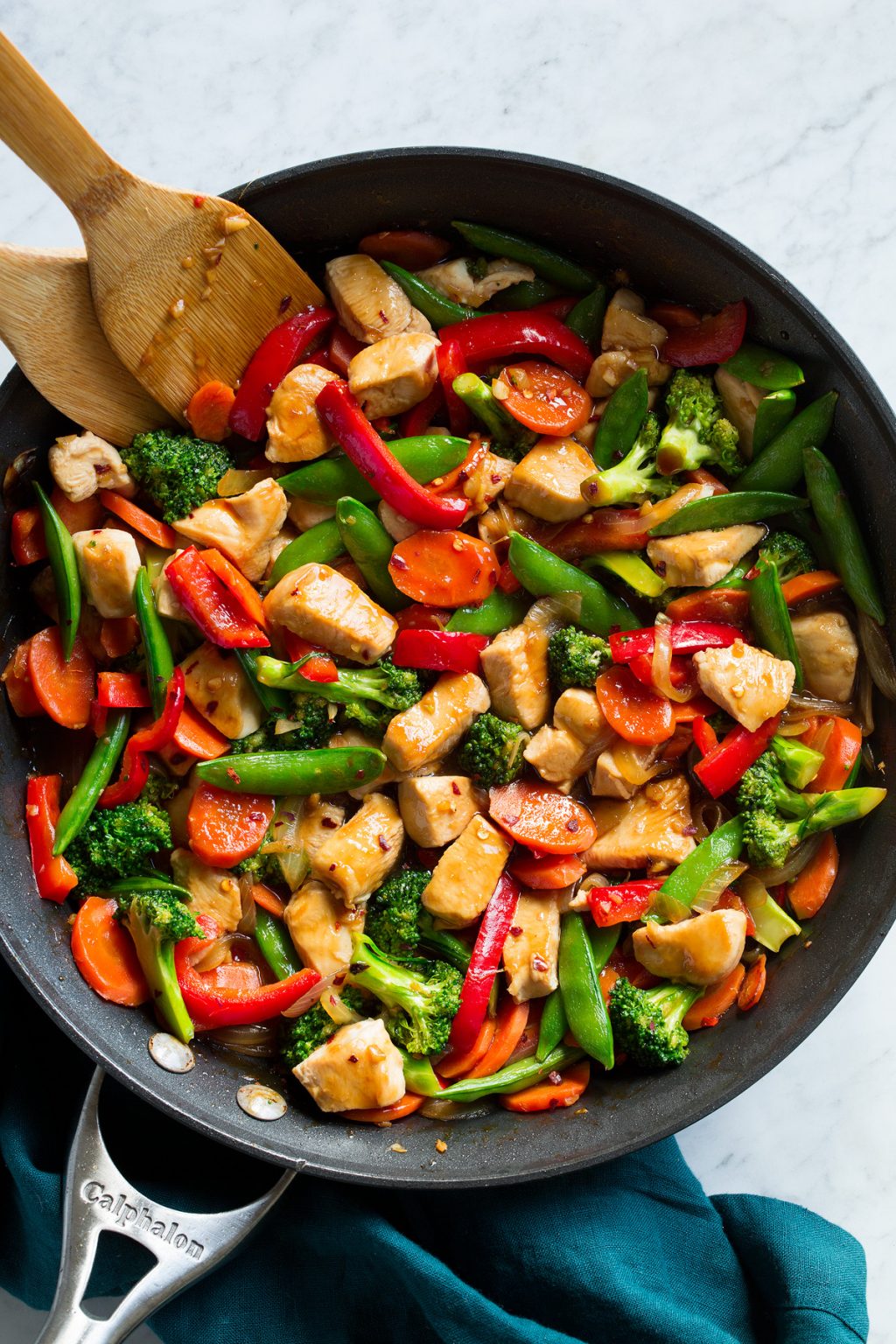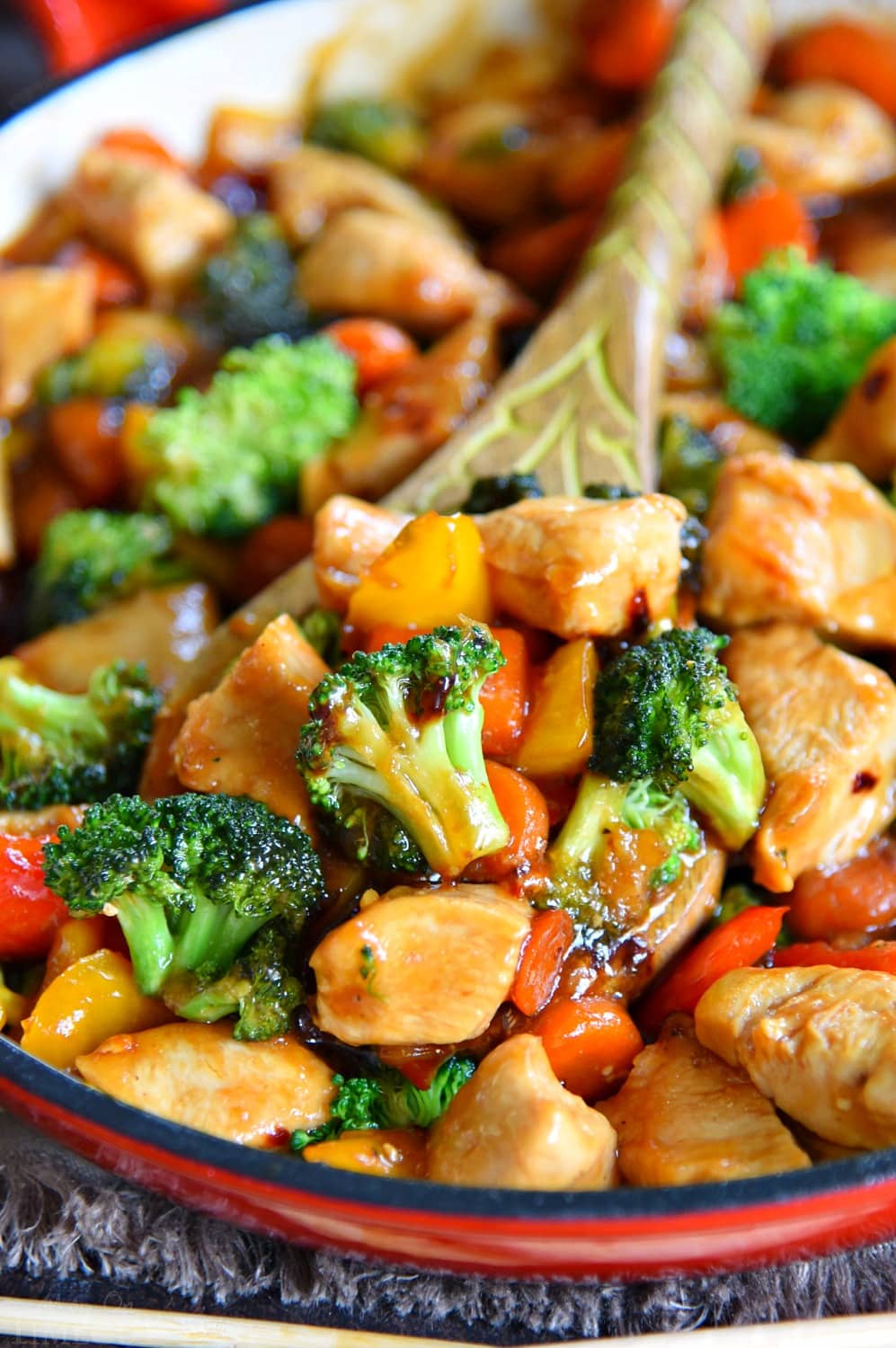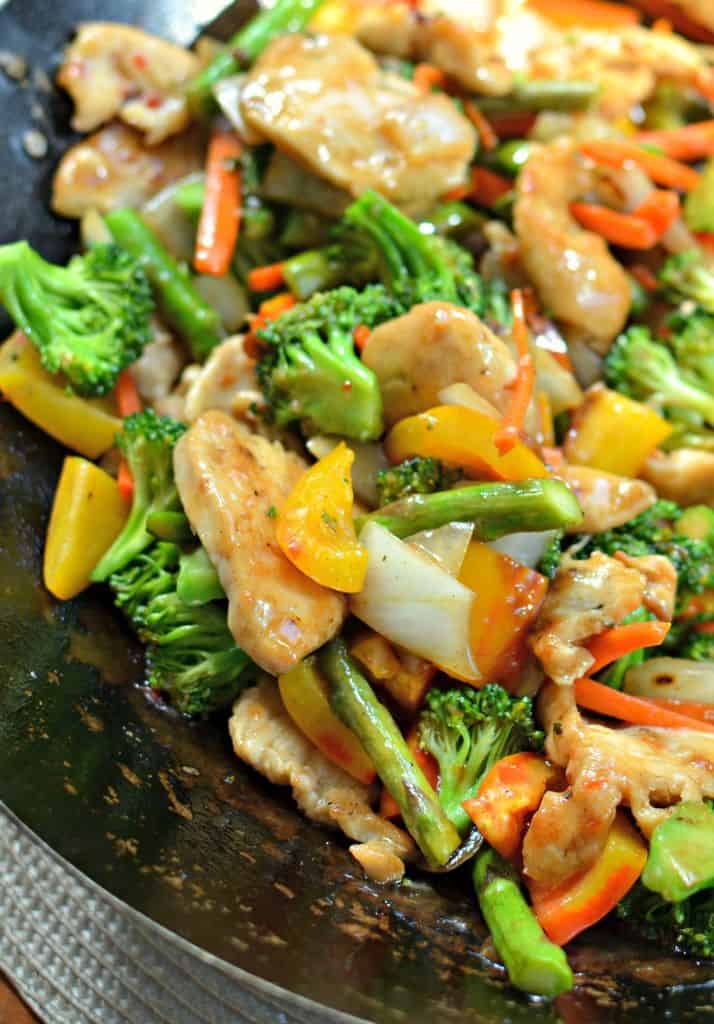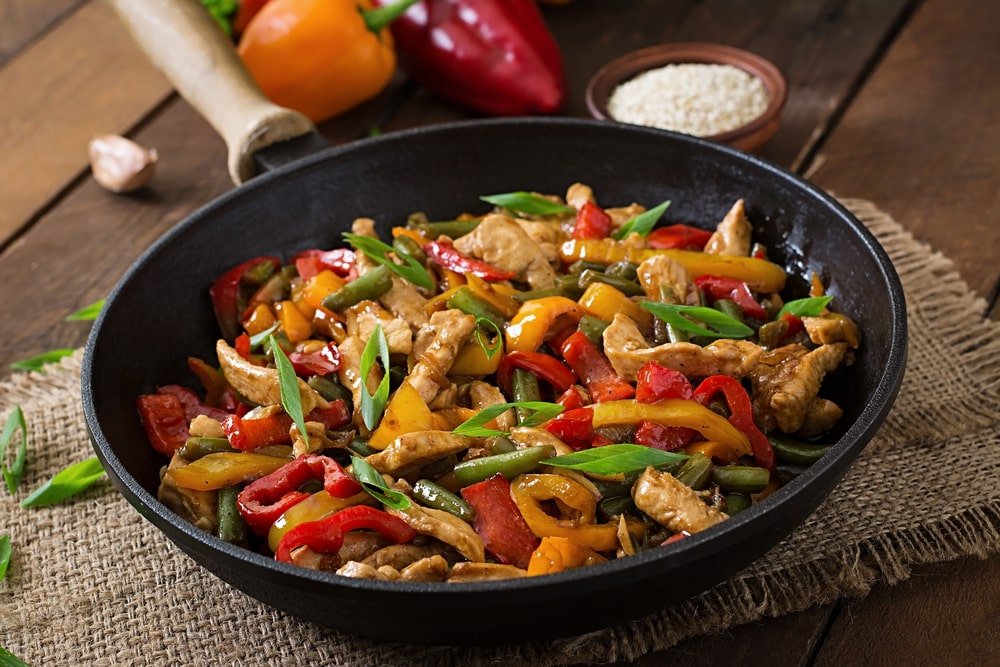Chicken Stir-Fry with Veggies: A Culinary Journey from Wok to Plate

Chicken stir-fry is a culinary chameleon, adapting effortlessly to diverse tastes and dietary preferences. This vibrant dish, a cornerstone of East Asian cuisine, transcends its simple ingredients to deliver a symphony of flavors and textures. From quick weeknight meals to elaborate celebratory feasts, chicken stir-fry offers versatility and deliciousness in equal measure. This comprehensive guide will delve into the art of crafting a perfect chicken stir-fry, exploring its history, variations, essential techniques, and providing detailed recipes to inspire your own culinary adventures.
A Brief History:
The origins of stir-frying are deeply rooted in Chinese culinary traditions, specifically in regions where quick cooking methods were necessary due to limited fuel sources. The wok, a versatile and indispensable cooking vessel, facilitated the rapid heating and even cooking required for stir-frying. Initially, stir-frying techniques focused on simple preparations, using readily available ingredients like vegetables and proteins. Over centuries, the technique evolved, incorporating diverse spices, sauces, and culinary influences, leading to the vast array of stir-fry variations we enjoy today. The spread of Chinese cuisine globally further propelled the popularity of stir-frying, leading to regional adaptations and interpretations.
The Magic of the Wok:
The wok’s unique shape and properties are crucial to successful stir-frying. Its curved sides allow for efficient heat distribution and rapid cooking, ensuring that ingredients are cooked evenly without overcooking. The high sides prevent ingredients from spilling out during the vigorous tossing involved in stir-frying. Choosing the right wok is paramount; carbon steel woks are preferred by many for their excellent heat retention and responsiveness. However, non-stick woks offer a convenient alternative for those new to stir-frying.
Essential Ingredients and Their Roles:
A successful chicken stir-fry hinges on the careful selection and preparation of its ingredients. Let’s explore the key components:
-
Chicken: The protein foundation. Chicken breast, thigh, or a combination works well. Cubing the chicken into bite-sized pieces ensures even cooking. Marinating the chicken beforehand enhances its flavor and tenderness. Common marinades include soy sauce, ginger, garlic, cornstarch, and sesame oil.

-
Vegetables: The vibrant heart of the stir-fry. The choice of vegetables is vast and depends on personal preference and seasonal availability. Popular choices include broccoli, carrots, bell peppers, snap peas, mushrooms, onions, and zucchini. Cutting vegetables into uniform sizes ensures even cooking and prevents some ingredients from becoming overcooked before others.

Sauce: The unifying element that brings all the flavors together. A classic stir-fry sauce typically consists of soy sauce, oyster sauce (optional but recommended), rice vinegar, cornstarch slurry (for thickening), sesame oil, and sugar or honey for balancing sweetness and saltiness. Variations can include chili garlic sauce for added heat, or hoisin sauce for a richer, more savory profile.
-
Garnish: The finishing touch. Chopped green onions, sesame seeds, and toasted slivered almonds add visual appeal and enhance the overall flavor profile.

Mastering the Stir-Fry Technique:
Stir-frying is a technique that requires practice, but the rewards are well worth the effort. Here’s a step-by-step guide to achieving perfection:
-
Prep Work: Mise en place is crucial. Have all ingredients prepped and measured before you begin cooking. This ensures a smooth and efficient cooking process.
-
High Heat: Heat the wok over high heat. This is crucial for achieving the characteristic "wok hei," a smoky flavor imparted by the intense heat.
-
Oil: Add a generous amount of oil to the hot wok. The oil should shimmer before adding the ingredients.
-
Chicken: Add the marinated chicken to the wok and stir-fry until cooked through and slightly browned. Remove the chicken from the wok and set aside.
-
Vegetables: Add the vegetables to the wok in order of cooking time, starting with those that require longer cooking times (e.g., carrots, broccoli stems). Stir-fry until tender-crisp.
-
Sauce: Add the prepared sauce to the wok and bring to a simmer, allowing the sauce to thicken slightly.
-
Combine: Return the cooked chicken to the wok and toss to coat evenly with the sauce.
-
Serve: Serve immediately over rice or noodles. Garnish with your chosen toppings.
Variations and Adaptations:
The beauty of chicken stir-fry lies in its adaptability. Here are some exciting variations:
-
Spicy Chicken Stir-Fry: Incorporate chili garlic sauce, sriracha, or chopped chilies for a fiery kick.
-
Sweet and Sour Chicken Stir-Fry: Adjust the sauce to include more sugar and vinegar for a sweet and sour profile.
-
Kung Pao Chicken Stir-Fry: Add peanuts, dried chilies, and Sichuan peppercorns for a classic Kung Pao flavor.
-
Lemon Chicken Stir-Fry: Add lemon juice and zest to the sauce for a bright and refreshing twist.
-
Teriyaki Chicken Stir-Fry: Use teriyaki sauce as the base for a savory and umami-rich stir-fry.
-
Vegetarian/Vegan Stir-Fry: Replace chicken with tofu, tempeh, or seitan for a vegetarian or vegan option.
Recipe: Classic Chicken Stir-Fry with Veggies
Yields: 4 servings
Prep time: 20 minutes
Cook time: 15 minutes
Ingredients:
- 1 lb boneless, skinless chicken breasts, cut into 1-inch cubes
- 1 tbsp soy sauce
- 1 tsp cornstarch
- 1 tsp sesame oil
- 1/2 tsp ground ginger
- 1 clove garlic, minced
- 1 tbsp vegetable oil
- 1 cup broccoli florets
- 1 cup sliced carrots
- 1 red bell pepper, sliced
- 1/2 cup snow peas
- 1/4 cup soy sauce
- 2 tbsp oyster sauce
- 1 tbsp rice vinegar
- 1 tbsp sugar
- 1 tbsp cornstarch
- 1 tbsp water
- 2 tbsp sesame oil
- Chopped green onions for garnish
- Sesame seeds for garnish
Instructions:
-
In a bowl, marinate the chicken with 1 tbsp soy sauce, cornstarch, sesame oil, ginger, and garlic. Set aside for at least 15 minutes.
-
Heat vegetable oil in a wok or large skillet over high heat.
-
Add the marinated chicken and stir-fry until cooked through and slightly browned. Remove from wok and set aside.
-
Add broccoli, carrots, and bell pepper to the wok and stir-fry for 3-4 minutes until slightly tender-crisp.
-
Add snow peas and stir-fry for another minute.
-
In a small bowl, whisk together 1/4 cup soy sauce, oyster sauce, rice vinegar, sugar, cornstarch, and water until smooth.
-
Pour the sauce into the wok and bring to a simmer, stirring constantly until thickened.
-
Return the cooked chicken to the wok and toss to coat evenly with the sauce.
-
Stir in 2 tbsp sesame oil.
-
Serve immediately over rice or noodles, garnished with chopped green onions and sesame seeds.
Conclusion:
Chicken stir-fry is a culinary adventure that rewards experimentation and creativity. By understanding the fundamental techniques and mastering the art of balancing flavors and textures, you can create a delicious and satisfying meal that will impress your friends and family. So, embrace the wok, explore the diverse world of ingredients, and embark on your own stir-fry journey! The possibilities are as limitless as your imagination.

Video tentang Chicken Stir-Fry with Veggies: A Culinary Journey from Wok to Plate
Penutup
Therefore, we hope this article has provided valuable insights on Chicken Stir-Fry with Veggies: A Culinary Journey from Wok to Plate. We thank you for the time you spent reading this article . See you in our next article!

